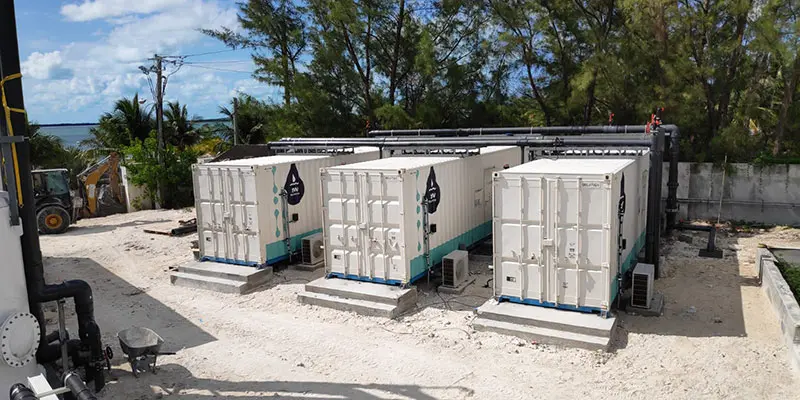By their nature, partnerships like build-own-operate contracts align the interests of the customer and the service provider.
Governments and industries are shifting from ownership to service-based delivery, and there are good reasons why
Building water and wastewater infrastructure requires massive capital investment and a team of experienced staff to operate. For many municipalities and businesses, limited budgets and limited staffing make traditional, capital-heavy infrastructure difficult to access.
There has recently been a global shift in the way water infrastructure is delivered and managed. Governments, utilities, and industries are moving away from traditional, capital-heavy projects toward performance-based contracts, a model that focuses on guaranteed outcomes rather than asset ownership.
In a performance-based model, private partners like Fluence design, build, own, and operate infrastructure while guaranteeing results that meet specified criteria such as treatment capacity, water quality, and uptime. Fluence’s Water Management Services include build-own-operate (BOO) agreements, in which the company builds a new plant at its own expense, as well as a Buy-Back Program that allows Fluence to purchase and upgrade an existing plant and operate it on the customer’s behalf.
These agreements represent a fundamental change in how water systems are financed and managed. Instead of paying for pipes, tanks, and pumps, customers pay for the service delivered and the peace of mind that comes with accountability built into the contract.
To understand why performance-based delivery is gaining traction, it’s helpful to look at the limitations of traditional ownership models.
Why Ownership Models Fall Short

Traditional design-bid-build models place long-term operational and financial risk on the owner, increasing the likelihood of deferred maintenance, service interruptions, and compliance challenges.
For decades, the traditional design-bid-build (DBB) model has been the standard approach for municipal and industrial water projects. While this approach seems straightforward in theory — a project is designed, put out to bid, and constructed — it comes with significant financial strain, and once completed, the responsibility of operating and maintaining the system shifts entirely to the owner.
Deferred maintenance, aging equipment, and limited staff capacity often make it difficult to keep systems running efficiently over time. With this approach, operating expenses are unpredictable, making it harder for municipalities to keep within budget.
These operational pressures aren’t limited to municipalities. Industrial users face similar challenges but with even higher stakes. Companies need guaranteed uptime and water quality to keep operations running smoothly and to meet environmental, social, and governance (ESG) goals.
Downtime due to poor water quality or system failures can cost millions, not to mention the reputational damage that comes with noncompliance. As a result, asset ownership is becoming less appealing than paying for reliable service.
The Advantages of Performance-Based Delivery
Performance-based delivery models transform the way communities and industries think about water management. Some of the advantages of this approach include:
- Shifting costs from capital expenditures to predictable operating expenditures: With BOO and other water management service models, the service provider is responsible for financing, building, and operating the system. Customers pay a fixed service fee over time, converting large up-front costs into manageable, long-term operational expenses. This approach frees up public funds and corporate capital for other priorities while ensuring the water infrastructure remains in peak condition.
- Guaranteed performance and compliance: Performance contracts specify measurable outcomes — capacity treated, water or effluent quality, uptime percentage — and require the service provider to meet them consistently. If the system underperforms, the provider bears the cost, not the customer. This creates a strong incentive for ensuring the system operates optimally and reliably throughout the contract term.
- Continuous innovation and optimization: Because the service provider’s profitability depends on efficiency, performance-based models encourage the use of advanced technologies such as automation, remote monitoring, and data analytics. Systems are regularly upgraded to improve energy efficiency and reduce costs — a stark contrast to traditional ownership models, where improvements are often delayed due to budget constraints.

A long-term BOO partnership ensures reliable, high-quality desalinated water for the resort without requiring capital investment or on-site operational staffing.
A clear example of these advantages in practice is Fluence’s long-term BOO desalination project for a Bahamas resort, where the company designed, built, owns, and operates a seawater reverse osmosis plant under a fixed-rate service contract. The model ensures a reliable supply of high-quality water without requiring the resort to invest capital or operate the system itself.
The Future: Paying for Outcomes, Not Assets
Performance-based water infrastructure aligns public and private incentives around shared goals: reliability, efficiency, and environmental stewardship. Governments and industries gain access to dependable water services without the financial strain of capital investment, while private partners like Fluence deliver long-term results backed by technical expertise and smart monitoring. Contact the Fluence team to explore how its BOO and Water Management Service models can help communities and industries secure dependable water performance without upfront capital.

